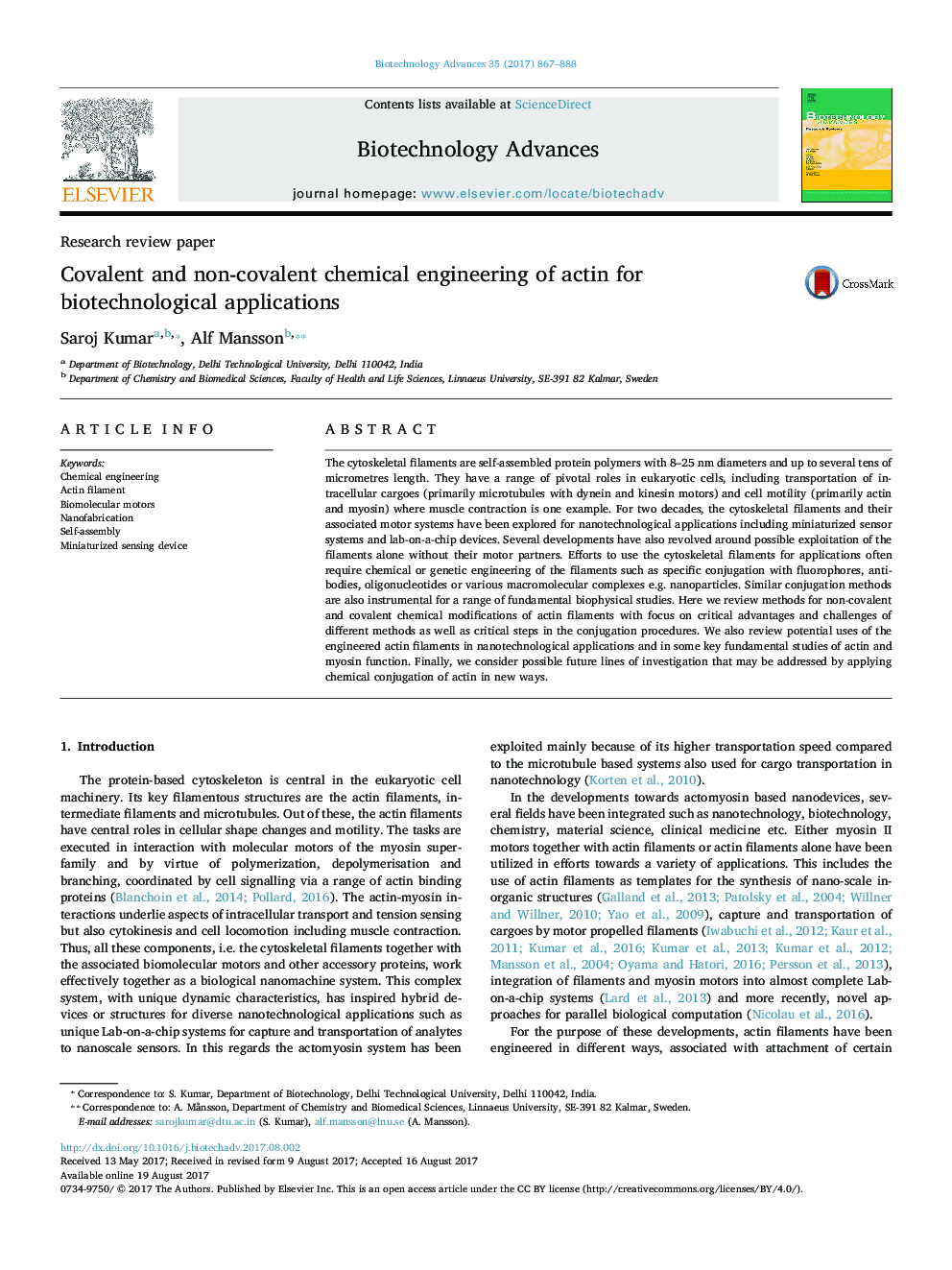| Article ID | Journal | Published Year | Pages | File Type |
|---|---|---|---|---|
| 6451143 | Biotechnology Advances | 2017 | 22 Pages |
The cytoskeletal filaments are self-assembled protein polymers with 8-25Â nm diameters and up to several tens of micrometres length. They have a range of pivotal roles in eukaryotic cells, including transportation of intracellular cargoes (primarily microtubules with dynein and kinesin motors) and cell motility (primarily actin and myosin) where muscle contraction is one example. For two decades, the cytoskeletal filaments and their associated motor systems have been explored for nanotechnological applications including miniaturized sensor systems and lab-on-a-chip devices. Several developments have also revolved around possible exploitation of the filaments alone without their motor partners. Efforts to use the cytoskeletal filaments for applications often require chemical or genetic engineering of the filaments such as specific conjugation with fluorophores, antibodies, oligonucleotides or various macromolecular complexes e.g. nanoparticles. Similar conjugation methods are also instrumental for a range of fundamental biophysical studies. Here we review methods for non-covalent and covalent chemical modifications of actin filaments with focus on critical advantages and challenges of different methods as well as critical steps in the conjugation procedures. We also review potential uses of the engineered actin filaments in nanotechnological applications and in some key fundamental studies of actin and myosin function. Finally, we consider possible future lines of investigation that may be addressed by applying chemical conjugation of actin in new ways.
